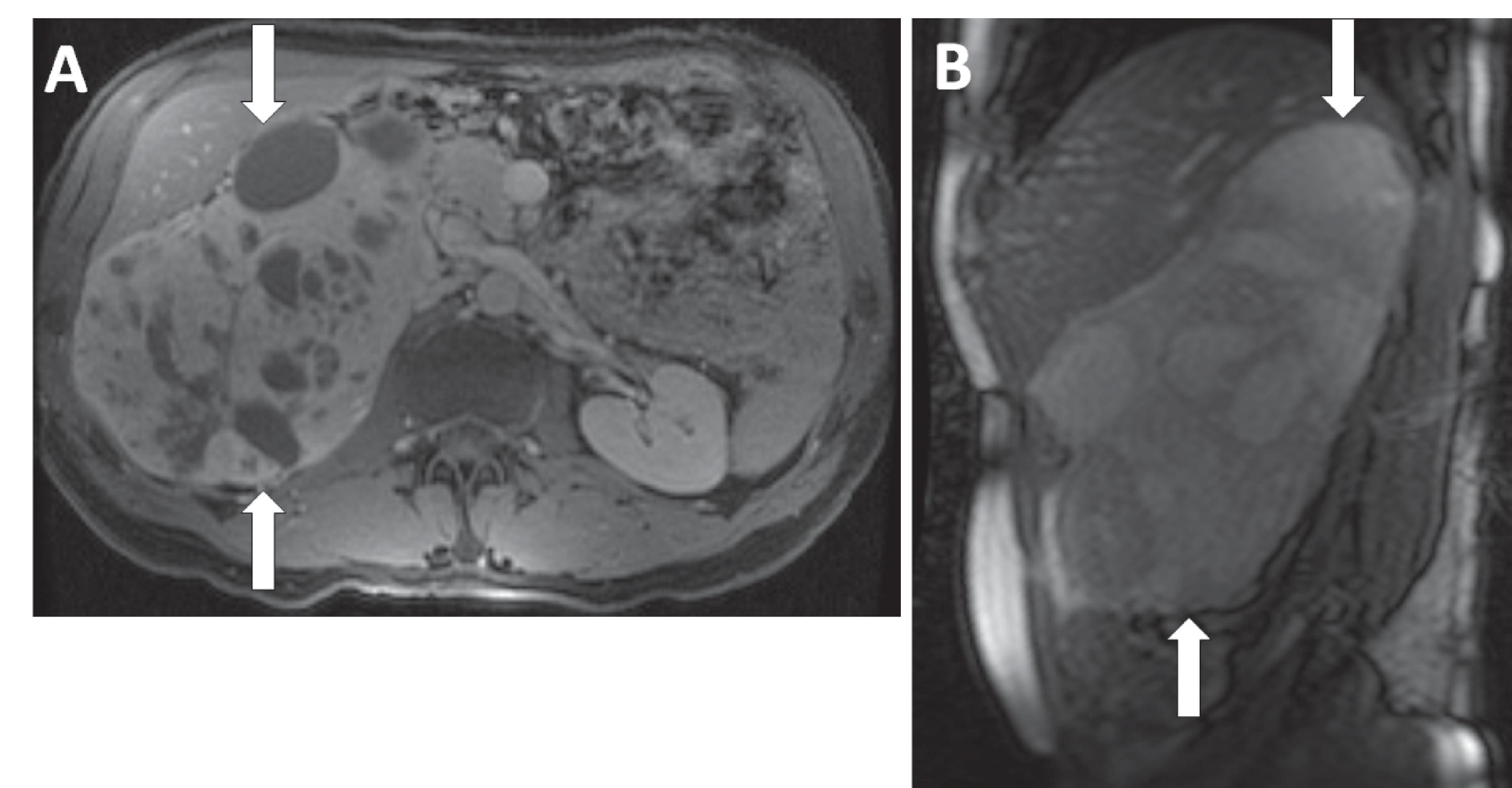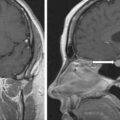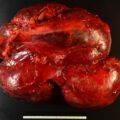The average size of a symptomatic catecholamine-secreting tumor is 4.5 cm. Some of the very large pheochromocytomas or paragangliomas (PPGLs) (e.g., >10 cm in diameter) are biochemically nonfunctioning. However, there is a unique subset of patients with PPGL who are asymptomatic despite large tumors and massive catecholamine hypersecretion. We describe one such case here.
Case Report
The patient was a 47-year-old man who was incidentally discovered to have a large right adrenal pheochromocytoma during an elective partial sigmoidectomy to remove large benign colon polyps. There was no problem with blood pressure lability intraoperatively. After his partial sigmoidectomy, abdominal magnetic resonance imaging showed a massive right retroperitoneal tumor (20 × 10 × 12 cm) ( Fig. 37.1 ). He always had normal blood pressure and denied paroxysms, palpitations, headaches, or sweating. There is no family history of pheochromocytoma. On physical examination his body mass index was 25.9 kg/m 2 , blood pressure 108/65 mmHg, and heart rate 87 beats per minute.

INVESTIGATIONS
Blood and 24-hour urine studies provided unequivocal proof that this was a catecholamine-secreting tumor ( Table 37.1 ). The 24-hour urinary excretion of dopamine, normetanephrine, and metanephrine was increased 124-fold, 7-fold, and 5-fold above the upper limits of the respective reference ranges.
| Biochemical Test | Result | Reference Range |
| Sodium, mmol/L | 143 | 135–145 |
Potassium, mmol/L | 4.4 | 3.6–5.2 |
Creatinine, mg/dL | 1.0 | 0.6–1.1 |
Plasma metanephrine, nmol/L | 1.9 | <0.5 |
Plasma normetanephrine, nmol/L | 15.0 | <0.9 |
24-Hour urine: | ||
Metanephrine, mcg | 2155 | <400 |
Normetanephrine, mcg | 6361 | <900 |
Norepinephrine, mcg | 374 | <80 |
Epinephrine, mcg | 1.7 | <20 |
Dopamine, mcg | 49,662 | <400 |
Stay updated, free articles. Join our Telegram channel

Full access? Get Clinical Tree








